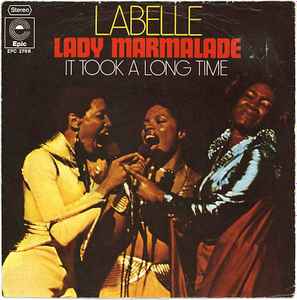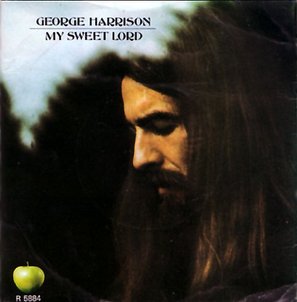 ABBA’s “SOS,” released in 1975 on the album ABBA, stands as one of the group’s earliest masterpieces, capturing a remarkable balance between heartbreak and exuberance. It is a song that defines the paradox of ABBA: how pop music, often dismissed as superficial, can carry immense emotional weight. Beneath its catchy melodies, shimmering production, and infectious hooks, “SOS” tells a story of romantic despair with a sincerity that elevates it from a pop single to a timeless classic.
ABBA’s “SOS,” released in 1975 on the album ABBA, stands as one of the group’s earliest masterpieces, capturing a remarkable balance between heartbreak and exuberance. It is a song that defines the paradox of ABBA: how pop music, often dismissed as superficial, can carry immense emotional weight. Beneath its catchy melodies, shimmering production, and infectious hooks, “SOS” tells a story of romantic despair with a sincerity that elevates it from a pop single to a timeless classic.
The mid-1970s were a period of both creative ascent and personal turbulence for ABBA. Benny Andersson and Björn Ulvaeus were solidifying their songwriting partnership, while Agnetha Fältskog and Anni-Frid Lyngstad were evolving as vocalists capable of conveying both joy and sorrow. “SOS” emerges from this fertile creative moment, a song born out of emotional honesty and musical ambition. Its enduring legacy is not just as a chart success—it remains a song that continues to resonate with audiences across generations, a testament to the group’s mastery of melodic storytelling.
Heartbreak Framed in Pop Brilliance
“SOS” opens with one of the most memorable pop motifs of the 1970s: the gentle, pleading piano chords that establish the song’s emotional tone immediately. It’s a simple progression, yet it communicates vulnerability before a single lyric is sung. This subtle introduction sets the stage for the dynamic contrast that defines ABBA’s music: the interplay between melancholy and euphoria.
Lyrically, “SOS” is deceptively straightforward. The song recounts the desperation of unrequited or faltering love, with the narrator reaching out for a lifeline. Lines such as “When you’re gone, how can I even try?” convey emotional urgency without ever tipping into melodrama. ABBA’s genius lies in their ability to frame heartache within a pop structure, transforming personal anguish into something universally relatable. It’s a song that allows listeners to both mourn and dance simultaneously—a rare emotional duality in popular music.
Vocal Dynamics: Agnetha and Frida at Their Finest
The vocal interplay between Agnetha Fältskog and Anni-Frid Lyngstad is central to the song’s emotional resonance. Agnetha’s crystal-clear, plaintive tone conveys vulnerability and fragility, while Frida’s richer, slightly darker timbre adds depth and urgency. Together, they create a dialogue of emotions, almost as if two sides of the same heart are speaking.
The chorus, where the singers blend in harmony, becomes almost an anthem for anyone who has felt lost in love. Their phrasing is impeccable—each note precisely placed, yet seemingly effortless, conveying authenticity rather than technique. In many ways, “SOS” is a showcase of ABBA’s vocal maturity. By this point in their career, the group had mastered the art of making pop music feel personal, an accomplishment few contemporaries could claim.
Melodic Construction and Instrumentation
Musically, “SOS” demonstrates ABBA’s ability to craft intricate yet accessible arrangements. The song is built around a strong melodic foundation, with the piano providing both rhythmic drive and harmonic support. The bass and drums enter gradually, giving the track a sense of motion that mirrors the emotional journey of the lyrics.
One of the song’s most notable features is the subtle yet dramatic use of strings and synthesizers. The orchestration swells during the chorus, reinforcing the emotional intensity without overwhelming the vocal lines. The production by Benny Andersson and Björn Ulvaeus is meticulous: every instrument occupies its own space, creating a layered sound that feels both lush and immediate. The listener is never unsure where to focus; the song directs attention naturally from the piano motif to the soaring vocals to the harmonic backing.
Guitar flourishes and gentle percussion accents give the track additional texture, ensuring that the arrangement never feels static. Unlike other pop songs of the era, which relied heavily on repetitive hooks, “SOS” balances repetition with development. Each verse and chorus introduces subtle variations, keeping the listener engaged from start to finish.
The Emotional Arc
What makes “SOS” stand out is its narrative arc. The song begins in a quiet, almost introspective space, with the singer’s vulnerability fully on display. As the track progresses, the urgency increases, culminating in a chorus that feels both cathartic and expansive. By the time the final refrain arrives, the listener has been taken on a journey from despair to emotional release, mirroring the experience of heartbreak itself.
This dynamic arc is one reason why “SOS” has endured. The emotional progression is not just a lyrical or vocal technique; it is embedded in the music itself. The rise and fall of the melody, the swelling of the strings, and the rhythmic push of the percussion all work together to simulate the intensity of human emotion. ABBA understood that pop music could be a vessel for deep feeling, and “SOS” is perhaps the clearest example of this philosophy in their early catalog.
Cultural Impact and Reception
Upon release, “SOS” was both a commercial and critical success, charting across Europe and eventually reaching audiences worldwide. Its popularity was fueled not only by its catchy hooks but also by its emotional sincerity—a combination that allowed ABBA to transcend the label of “disco-pop” or “light entertainment.”
Over the years, “SOS” has become emblematic of ABBA’s ability to marry craft and heart. It has been covered by artists ranging from heavy rock bands to contemporary pop singers, each attempting to capture its delicate balance of vulnerability and grandeur. The song’s inclusion in stage productions and film soundtracks has further cemented its status as a pop standard, demonstrating its timelessness and broad appeal.
Production Brilliance: The Sound of a Perfectly Balanced Pop Song
The production of “SOS” deserves detailed attention because it illustrates ABBA’s innovative approach to pop music. Andersson and Ulvaeus had already established a reputation for meticulous studio work, and this track exemplifies their commitment to sonic clarity. Each instrument and vocal line is carefully positioned, creating a three-dimensional sound that feels both intimate and expansive.
The decision to keep the piano prominent throughout the track is particularly effective. It serves as the emotional anchor, reinforcing the lyrical content while driving the song forward. The strings, used sparingly yet dramatically, punctuate moments of heightened emotion, while the subtle backing vocals enhance the harmonic richness without overshadowing the lead.
It is this attention to detail that allows “SOS” to feel alive more than four decades after its release. Unlike some contemporaneous pop hits that rely on gimmicks or repetitive hooks, the song’s power derives from the careful orchestration of emotional and musical elements—a true testament to ABBA’s genius.
Pop Music as Emotional Storytelling
“SOS” is a perfect illustration of ABBA’s unique approach to pop music: it is simultaneously highly crafted and deeply emotional. The song proves that pop music need not sacrifice emotional complexity for accessibility. Every element—the lyrics, vocals, instrumentation, and production—works together to tell a story of longing, despair, and the fragile hope of reconciliation.
The genius of ABBA lies in their ability to make the personal universal. Listeners may not have experienced the exact scenario depicted in “SOS,” but the emotional truths resonate universally. The sensation of reaching out for help, of grappling with loss, and of yearning for connection is something everyone can understand, and ABBA’s music gives it form and voice.
Legacy and Influence
“SOS” has had a lasting influence on both pop music and culture at large. Its innovative production techniques, emotive vocal performances, and careful blending of melancholy and exuberance have inspired countless artists. The song paved the way for ABBA’s later masterpieces, including hits like “Dancing Queen” and “The Winner Takes It All,” and it demonstrated that the group could handle serious emotional material without sacrificing pop appeal.
Moreover, “SOS” continues to resonate because it captures the emotional ambivalence of love itself. It is not a simplistic tale of heartbreak; it acknowledges confusion, longing, and desperation. In doing so, it transcends its era, remaining relevant to listeners today who experience similar complexities in relationships.
Musical and Emotional Balance
One of the defining features of “SOS” is its remarkable balance. The song could have easily tipped into melodrama given its lyrical content, yet ABBA navigates these waters expertly. The vocals convey vulnerability without whining, the strings swell without overwhelming, and the melody is memorable without being simplistic. Every musical decision seems deliberate, aimed at maintaining equilibrium between sadness and pop sensibility.
This balance is perhaps what makes “SOS” a quintessential ABBA song. It captures the duality that defines much of the group’s work: the ability to blend joy and sorrow, the personal and the universal, into something that feels both immediate and timeless.
Conclusion: The Timeless Appeal of “SOS”
ABBA’s “SOS” is more than just a pop hit; it is a masterclass in emotional storytelling, vocal excellence, and musical craftsmanship. It encapsulates the essence of what makes ABBA enduringly compelling: the ability to craft music that is at once accessible and profound, simple in structure yet complex in emotion.
Decades after its release, the song continues to captivate listeners, proving that true pop music transcends time when it is rooted in genuine human experience. Its influence can be felt in the work of contemporary artists who aim to marry heartfelt lyrics with melodic sophistication, and its resonance endures because the emotions it captures are universal.
Listening to “SOS” is both a delight and a revelation—a dance of heartbreak and hope, of vulnerability and strength, all wrapped in a pop song that feels impossibly fresh yet achingly familiar. It is a testament to ABBA’s genius that such a seemingly straightforward song can carry such weight, and it stands as a shining example of how pop music can touch the deepest corners of the human heart.



